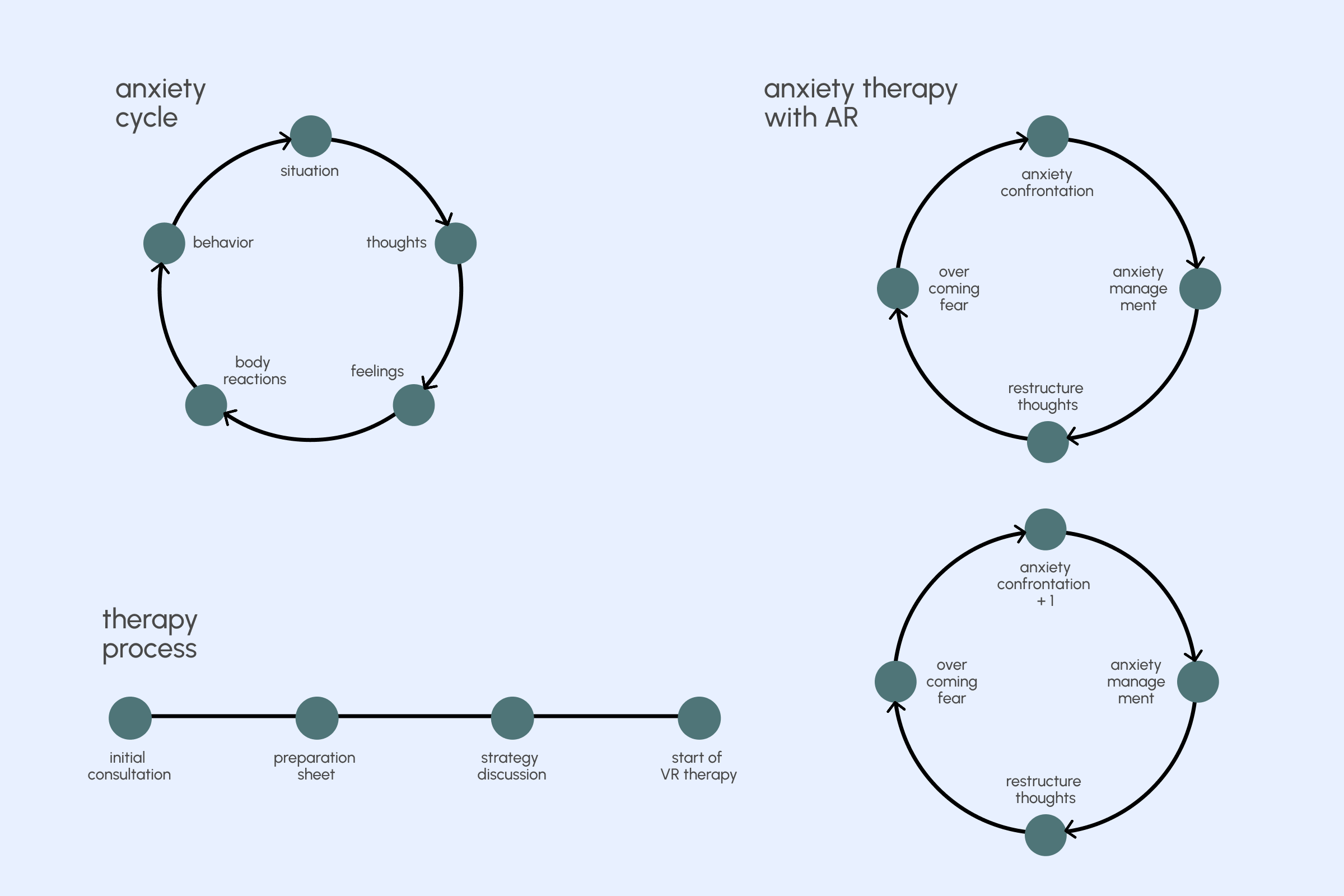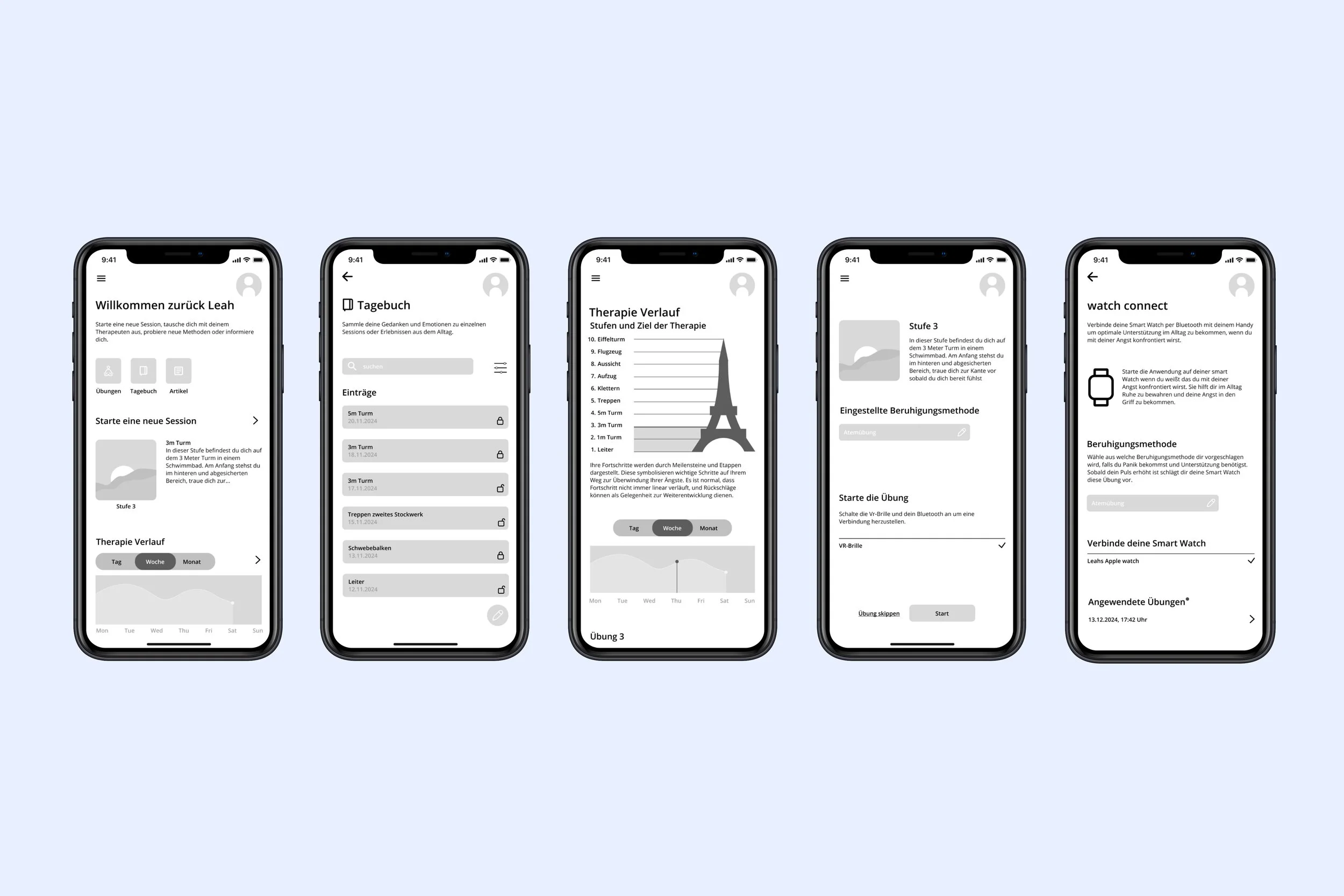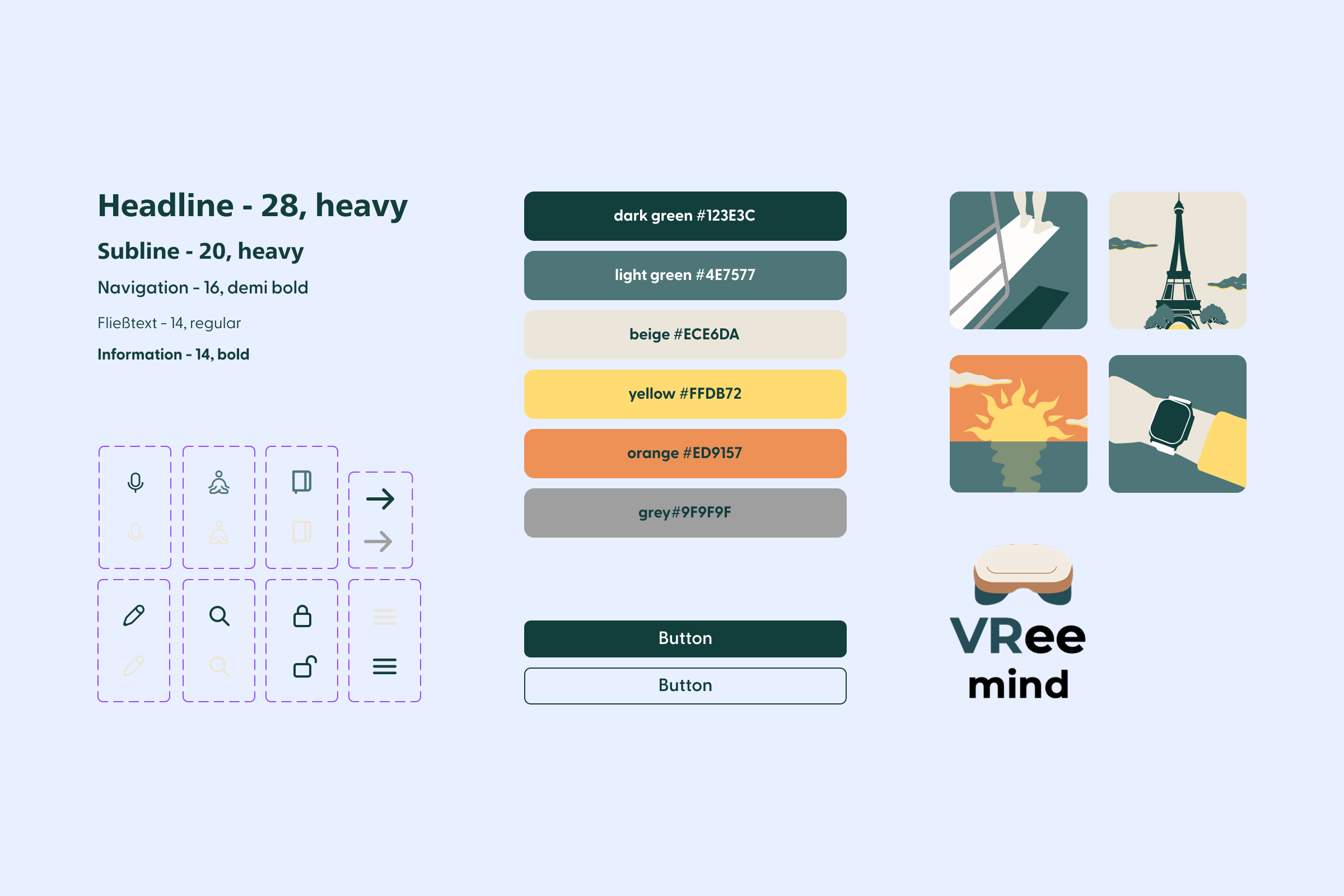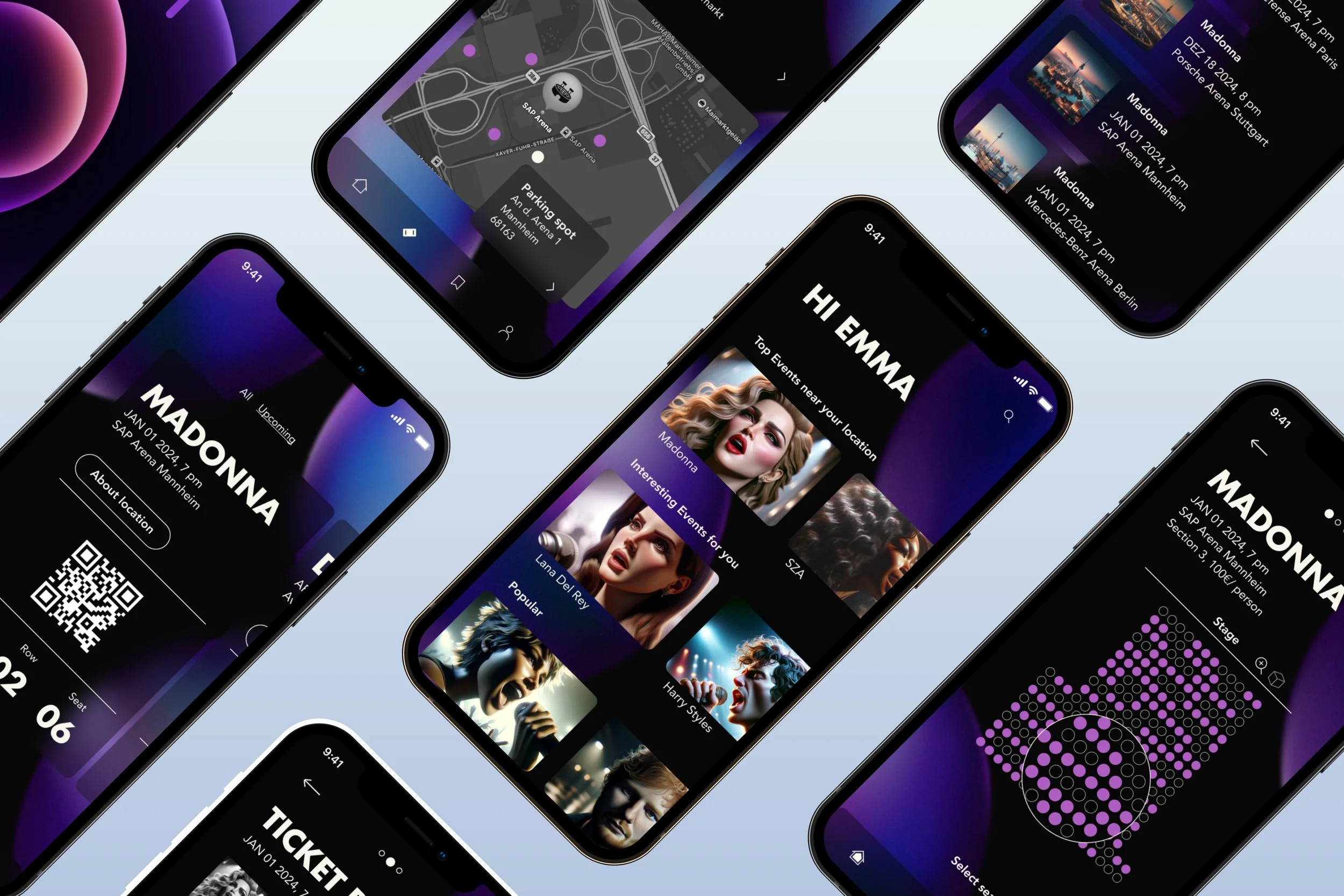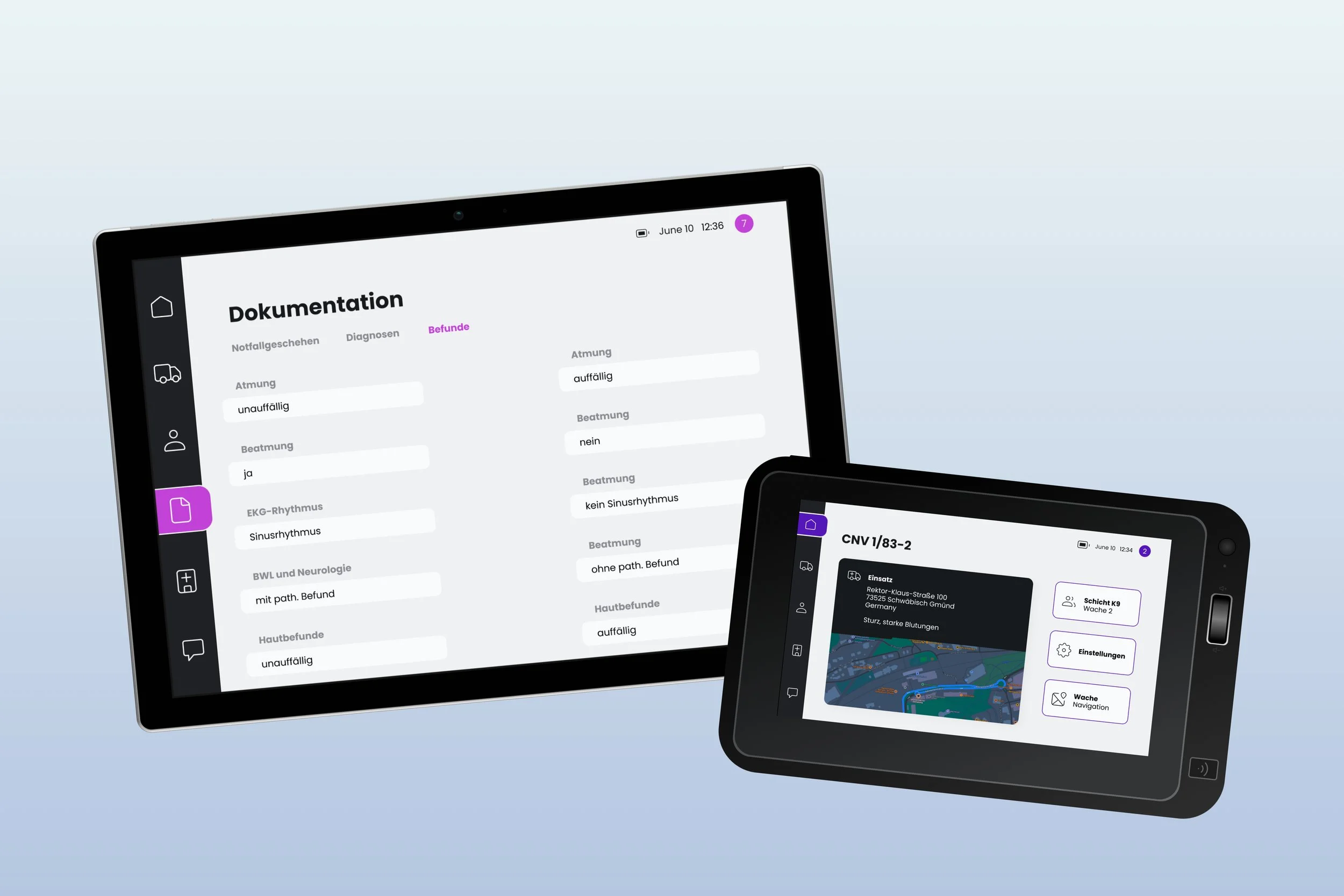VR application providing targeted support with anxiety.
DIGITAL ANXIETY THERAPY
course
invention design by
David Oswald
year
2024
timing
5 months
team
Emily Kühl
Nina Dettmers
my role
reseach
concept
interviews
ux/ui
problem
In contemporary society, numerous individuals experience pathological anxiety that significantly impacts their daily lives. The rising incidence of anxiety disorders has amplified the demand for therapeutic interventions. In response, we have created a digital anxiety therapy platform to alleviate the workload of therapists and provide enhanced support for patients with phobias. The application is designed not only to provide effective confrontation therapy, but also to facilitate communication between patient and therapist.
affected person interviews
We started by conducting in-depth discussions with people affected by various fears, such as spider phobia, fear of heights and claustrophobia. These provided us with a wide range of insights. Their symptoms vary greatly, from fainting spells, muscle cramps, nail biting, nervousness and tension to screaming or crying. Such anxieties have a significant impact on their lives, which is why they want more understanding and support from their social environment. Therefore, there is a need to both understand individual challenges and raise awareness in society.
research
expert interview
Subsequently, we conducted several enriching expert interviews with the alternative practitioner and osteopath Pavlos Mentis. He explained that fears often stem from past experiences and that certain phobias develop at a young age or between the ages of 30 and 40. He then delved into the precise origins of trauma, explaining that trauma is first triggered and then flashbacks evoke memories of the situation in question, resulting in anxiety. In order to treat the trauma successfully, the therapist must be put into a trance state in order to gain access to the patient's subconscious. It is crucial that the patient understands that they are treating themselves - not the therapist treating the patient. The patient's independence plays a decisive role in the success of the therapy. Trauma can only be resolved if the patient's logical thinking is activated. An essential component of therapy is to transform the negative into the positive in order to enable reconditioning.
therapy process
In order to better understand and illustrate the entire therapy process, we outlined a so-called anxiety cycle. Within this cycle, a given situation first gives rise to thoughts, which are then followed by feelings. These feelings then manifest themselves in physical reactions, which lead to certain behaviors. In the context of anxiety therapy with VR glasses, the patient confronts their anxiety directly. The next step is to overcome the anxiety by using techniques such as autogenic training or progressive muscle relaxation. The thoughts are then restructured, which leads to overcoming the fear. This process is repeated until the trauma has been successfully overcome.
concept
wireframes
After outlining the course of the therapy, we started with the "Crazy 8" method to collect ideas on how we could visualize the content. Afterwards, we converted these ideas into wireframes where we structured and visualized the content. Our concept idea comprises six central elements that we integrated into our app. These include the option to document therapy sessions and various exercises. Furthermore, the app allows users to write diary entries and obtain a comprehensive overview of their therapy progress. Finally, we offer the option of reading articles from other people affected and an integration of the user's Apple Watch.
result
design system
We created a design system for our final design of the app. The selected colors ensure that the app makes a serious and trustworthy impression. In order to make the app appear more personal, we created illustrations to support patients in the best possible way.
technical implementation
An innovative VR solution was developed to realize the functionality of the app. As soon as the user puts on the VR goggles, they are placed in a Blender model that allows them to move freely and look around. This interactivity allows patients to determine their personal comfort level and decide how much they are comfortable with. Our aim is to offer a variety of different 3D models that are individually tailored to the needs of each patient. These models are selected together with the therapist at the beginning of therapy to ensure that they match the patient's specific fears and challenges. In addition, the VR goggles are equipped with an innovative heart rate monitoring function that allows the user's heart rate to be monitored in real time. This data is used to closely monitor the course of therapy and help patients manage their anxiety and make progress. In addition, as soon as the rate is too high, a predetermined calming method is displayed to help patients calm down in a confrontational situation.
learning
Our interviews with experts provided profound insights into anxiety therapies, which we have translated into conscious decisions and integrated as key components of our application.
vision
In the upcoming phase of our development, we aim to enhance and broaden the capabilities of our Apple Watch application alongside our current user app. This advancement will allow patients to continue managing their fear of heights effectively, even after completing VR therapy. By integrating features such as guided breathing and meditation exercises, the Apple Watch will offer targeted support in real-time, helping users maintain their progress and confidence in challenging situations.
